How Not To Critique Judy Wood
Francis O'Neill's intellectually flimsy attack on Judy Wood bears all the hallmarks of propaganda, undermining his credibility as a dissident voice
Introduction
The latest attack on the research of Judy Wood, by
on October 15, 2024, bears all the usual deficiencies, includingfailure to cite Wood’s seminal book, Where Did The Towers Go?;
use of clichés, stereotypes, and straw-man arguments; and
recourse to claims and arguments that were debunked years ago.
O’Neill’s critique is intellectually outdated, with most of its key sources dating back to 2006-7, four to five years before Where Did The Towers Go? was published (e.g., Jones, 2006; Legge, 2006; Jenkins, 2007; Gourley, 2007), In that respect, it is 17-18 years behind the curve.
Opening Claims
First, O’Neill claims, without any reference or citation, that, according to Wood, the Twin Towers were “turned to dust by an energy weapon.” Yet, in her book, which supersedes her earlier work and should be the primary reference point of any serious critique, Wood (2011) does not make any hard claims regarding what exactly destroyed the Twin Towers. Instead, she presents evidence and asks the reader to look at it with their own eyes, rather than outsourcing their thinking to others, as O’Neill has done with his second-hand criticisms.
According to O’Neill, Wood’s claim that the Twin Towers were “dustified” is “refuted by the presence of thousands of tons of structural steel in the debris field.” Yet, Wood never claimed that everything had been “dustified.” One metaphor she employs is that the Twin Towers were peeled apart like a banana. This is consistent with remnants of the outer walls lying in the debris field while virtually everything else disappeared.
O’Neill resorts to cliché: “Judy Wood advanced the notion that the WTC was attacked by Star Wars Directed-Energy Weapons.” I have dealt with the “space beam” smear elsewhere. It amounts to little more than a propaganda term that operates in a similar manner to “conspiracy theorist,” i.e., to close down critical discussion and debate. In any case, if Wood’s research really were so ridiculous, there would be no need for so many critics to expend so much time and energy over so many years trying in vain to debunk it. O’Neill joins a long and ignoble line of them.
The Missing Million Tons
O’Neill writes: “From selected images she [Wood] concluded that there was insufficient debris to account for the Towers, although huge piles of structural steel were photographed. In such images a sense of the scale of the pile is not always apparent.” However, although the pile may appear huge in relation to individual rescue workers (as per the photographs O’Neill presents), it is minuscule (“essentially non-existent” in Wood’s words, which O’Neill claims not to understand) in relation to the height of the Twin Towers:
Two 110-story buildings weighing an estimated 1 million tons [Source: skyscrapercity.com]
Remember, the debris pile was immediately close to ground level :
[Source: fbi.gov]
Source: DrJudyWood.com. Note WTC7 still standing in the background and the short shadows, suggesting overhead sun around midday, barely 1.5-2 hours after the towers disappeared.
All of which begs the fundamental question posed by the title of Wood’s book.
Where Did The Towers Go?
In seeking to provide answers, O’Neill turns to outdated sources such as Legge (2006) and Jenkins (2007). According to Legge, “the basements were 7 storeys deep which would have provided space for a great deal of material.” In other words, much (most?) of the Twin Towers, which had an estimated mass of half a million tons each, fell straight into the basements. They did so, however, without killing the survivors on Stairwell B, without destroying the two large Freon tanks contained in the basements, without causing a proportionate seismic signal, and without obliterating the bathtub. So we can rule out that possibility.
A freon tank is removed from Ground Zero, intact [Source: osha.gov]
O’Neill appeals to the width of the debris field to account for its very low height, even though this implies that most material from the Twin Towers (“the vast majority” in fact) did not fall straight into the basements after all, thus undermining his previous point.
To support his argument, O’Neill turns to an interview with Wood conducted by Greg Jenkins on January 10, 2007. He makes no mention of the highly unusual nature of the interview, which Andrew Johnson (2011, pp. 41-47) plausibly describes as an “ambush” intended to discredit Wood using nefarious tactics.
In the interview, O’Neill writes, “Wood seems unwilling to acknowledge the scale of the primary debris field,” with its estimated diameter of 1,200 feet.” The opposite is true, however: Wood actually goes on to question where to draw the line of the debris field, given that inch-thick dust was found miles away and a lot of dust went upwards into the atmosphere.
Mistakenly assuming Jenkins to be a credible source, O’Neill cites Jenkins’ (2007) contention that “skyscrapers are designed to be mostly empty space by volume,” so that when they collapse, “the debris is contained in a small pile many times smaller than its pre-collapse height.” This appeal to thin air ignores the sheer quantity of material present in two 110-storey steel-framed skyscrapers with estimated mass of half a million tons each. For example, here is the South Tower under construction in 1969, starting at the bottom of the bathtub:
Source: Wikipedia
And here are the Twin Towers under construction a few years later, adding another 110 storeys of steel to what is visible in the above photograph:
Source: Wikipedia
Does anybody seriously expect that such structures would collapse into “a small pile”?
O’Neill cites Jenkins’ (2007) claim that “if all the steel in the upper 110 floors of a WTC tower were hypothetically melted down into its own footprint, the resulting slab would only be about seven feet high.” Even if this were true, so what? The Twin Towers were not melted down into their footprints. This is just another tactic for trying to minimize the amount of material that went missing.
O’Neill accepts Jenkins’ (2007) conclusion that “all of the debris in the WTC complex can be accounted for within the sublevel collapses.” He appears not to have noticed that this contradicts another of Jenkins’ claims, which he cites, namely that “The vast majority of the building, however, fell well within an area defined by a radius 6 times its footprint” (Jenkins & Arabesque, 2007). So which is it? Did most of the material “collapse within the sublevels” (Jenkins, 2007), or was it spread out across a wide debris field (Jenkins & Arabesque, 2007)? Neither explanation is credible given the size and mass of the buildings and their contents.
The Dust Clouds
According to O’Neill, “What Wood refers to as dust is smoke from oxygen starved fires in the North Tower which is behind the South Tower and so not visible in the picture. This smoke was present before and after the South Tower’s collapse.” To illustrate this, O’Neill uses the following annotated image from Jenkins and Arabesque (2007), whose argument it was in the first place:
Jenkins obviously regarded this photograph as being of special significance, as he referred to it repeatedly in his ambush interview with Wood.
O’Neill’s claim that “What Wood refers to as dust is smoke from oxygen starved fires in the North Tower” is flawed on its face, given that Wood treats both the lighter and the darker particles as dust (just different kinds).
It is not true that all the darker dust in the above image emanated from the North Tower, as a different angle shows:
Source: Bitchute
In Jenkins’ annotated image, where has the upper half — Wood (2011, p. 307) claims two thirds — of WTC2 gone? O’Neill does not think to ask. None of it has hit the ground, so is not in the basement or spread across a wide debris field. For reference, the black Deutsche Bank Building in the foreground was 535 feet high; WTC2 was over two and half times higher. When pressed on this by Wood in the ambush interview, Jenkins was forced to claim that the entire upper portion of the building is contained within what Wood calls “the snowball” (labelled “South Tower Debris” on the image above). Readers can make up their own minds whether this is credible.
Wood contends that the Twin Towers were mostly turned to dust in mid air, with a substantial proportion then blowing away in the wind. Jenkins and O’Neill, in contrast, are fundamentally concerned to persuade us that whatever happened to the towers, the missing million tons all fell within a radius of ca. “400 to 500 feet from each tower’s base,”
Yet, who would dispute that the towers were mostly turned to dust in mid air when looking at the front cover image of Where Did The Towers Go?
The destruction of WTC1 captured from the air (cf. Wood, 2011, pp. 171-172). Image credit: Detective Greg Semendinger, New York City Police Aviation Unit.
Note the fountain-like pattern of destruction in the lighter dust, with massive amounts of material being ejected upwards and outwards before falling to the ground. The darker dust in the middle behaves differently.
Here is the middle section from a different angle, with lines of destruction apparently emanating from a central point at the bottom:
Source: DrJudyWood.com
And here is a series of images of the destruction of WTC1 captured by NYPD’s Dave Fitzpatrick (the helicopter is Greg Semendinger’s):
Source: NYPD (2002)
Keeping in mind that all the dust from the controlled demolition of the Seattle Kingdome settled within around 30 seconds, consider the incredibly energetic dust cloud rollout that followed the destruction of WTC1:
A two-minute CNN clip, condensed here into the following four images, records what happened:
Source: CNN
The dust generated by the destruction of the Twin Towers did not fall neatly within a 600 foot radius of the Twin Towers, as Jenkins and O’Neill want us to believe. Rather, it escaped everywhere:
Credit: Getty Images. Source: BBC.
Instead of settling, it continued to rise upwards, as shown here, just before WTC7 was destroyed:
Source: YouTube
A satellite image, possibly taken after the destruction of WTC2 but before the destruction of WTC1, shows dark and light dust, the latter “wafting for miles over New Jersey and Staten Island” (Wood, 2011, p. 317):
Source: DrJudyWood.com
As Wood (2011, pp. 380-81) points out, the pile continued to fume for months, with bogus stories about “molten metal” being used to claim that the “fumes” (i.e., evidence of ongoing molecular dissociation) were in fact steam:
“Fuming,” 21 September, 2001 [Source: 9/11research.wtc7.net]
In sum, despite Jenkins’ and O’Neill’s pretence that the only thing to escape into the atmosphere on “9/11” was smoke, the evidence supports Wood’s contention that the Twin Towers were mostly turned to dust, large amounts of which blew away in the wind before settling in different thicknesses over an immeasurably large area.
Seismographic Data
According to O’Neill, “Wood offers seismographic data as evidence that the Twin Towers were turned to dust, claiming that readings were not sufficiently high to reflect the mass of the falling structures.” Here, he links to Wood’s work from 2006 and not the full write-up in Where Did The Towers Go? (2011). In fact, Wood does not use seismographic data to show that the towers turned to dust. Rather, she uses it to discredit both the official “pancake collapse” theory and the idea that controlled demolition induced a gravity-driven collapse.
For indeed the 2.1 and 2.3 Richter scale readings for the destruction of the Twin Towers do not reflect the mass of the buildings, had they actually “collapsed.” Each tower weighed an estimated 500,000 tons and had a footprint of 43,000 square feet, compared to 130,000 tons and 342,0000 square feet for the Seattle Kingdome (Wood, 2011, p. 72). Owing to its much smaller footprint and far greater mass, each Tower had 30 times the potential energy of the Kingdome, whose demolition registered 2.3 on the Richter scale (Wood, 2011, p. 72). It stands to reason that the Richter scale reading for each tower should have been significantly higher than 2.3 (Wood calculates 3.5) had they really slammed to the ground.
Instead of simply agreeing that the official gravity-driven collapse model is nonsense, O’Neill goes to bizarre lengths trying to show that the 2.1 and 2.3 Richter scale readings were possible without dustification. Apparently, “the concrete was observably exploding in mid-air and so not hitting the ground intact,” even though concrete is not an explosive. This sounds like a tacit recognition of the fact that the towers were mostly turned to dust in mid air, only with “exploding concrete” substituted for “dustification.”
Later O’Neill clams that the concrete was “pulverised,” but as Wood has argued, “pulverisation” is not the correct term, for how can anything be “pulverised” when meeting only air resistance? O’Neill himself concedes that the concrete “might colloquially be said to have been reduced to dust,” which is more accurate, although not only the concrete was dustified. Huge quantities of steel, gypsum, 45,000 metal filing cabinets, and 1,106 people all disappeared without trace.
Concrete accounted for roughly 60% of the Twin Towers’ mass (Wood, 2011, p. 77), or 300,000 tons per tower, leaving another 200,000 tons per tower of non-concrete material, still far higher than the Kingdome’s 130,000 tons. In trying to explain why all this material did not generate a higher Richter scale reading, O’Neill cites Legge (2007): “once an appreciable layer of steel beams had formed, the stack would act as a giant shock absorber.” We are into the realm of pure comedy at this point. On O’Neill’s account, for each tower, 200,000 tons of material (mostly steel) hit the ground within a 400-500-foot radius within eight seconds, yet instead of generating a seismic signal larger than the demolition of the Kingdome, that same steel actually served to cushion the impact!
O’Neill expects us to believe that the Kingdome comparison does not work, because the Kingdome was not a streel-framed building but, rather, “a concrete structure of a very different nature.” Quite what this has to do with potential energy, the mass of material hitting the ground, or the generation of seismic data is anyone’s guess.
Toasted Cars
O’Neill rehearses the usual criticisms of Wood’s ideas about what she calls “toasted cars.”
For example, the cars on FDR Drive had been towed rather than “toasted” there. This is true, but it does not affect the overall significance of the “toasted cars” (see below).
“The fires were caused by molten metal and thermitic reactions,” O’Neill claims. This is the Architects and Engineers for 9/11 Truth line:
Partially unignited thermite, thermate, and/or nano-thermite falling through the air as it continued to react would have produced molten iron droplets. A still-reacting thermitic mixture drifting down onto the cars in the dust plumes could easily account for the singeing of their paint and even igniting the cars (since the highly exothermic thermite reaction can quickly reach temperatures exceeding 4000 °F).
Yet, if nearby cars really were “singed” and “ignited” by “molten iron droplets” contained in the dust clouds, involving thermitic reactions “exceeding 4000 °F,” why were the huge numbers of people caught in the dust clouds not killed or badly injured by the extreme heat?
According to O’Neill, the toasted car fires “did not differ from regular car fires” and the toasted cars resembled the cars below:
Readers can judge for themselves whether the above photograph resembles the one below:
Source: Metabunk
That photograph was taken on West Broadway, close to the intersection with Barclay Street, slightly northeast of WTC7:
Source: Metabunk
Again, if the dust clouds “scorched” cars, why did they not do the same to people?
With abandoned cars in the middle of West Broadway having apparently been removed for access purposes, another photograph reveals that a toasted van has mysteriously wilted, quite unlike the vehicles shown by O’Neill. Note that WTC7 is still standing in the background and that civilians on the sidewalk are evidently not concerned about dangerously high temperatures — so what has done this to the van?
Source: DrJudyWood.com
Lest we be tempted to attribute the wilting of the van to other factors, such as having been hit by falling debris or a vehicle fire, Andrew Johnson (2017, p. 1) draws attention to the condition of the bus on West Broadway before and after the destruction of WTC 7:
What has caused the bus to degrade in this fashion over the course of a few hours? Evidently, there was something very strange going on in this particular location that cannot be explained through conventional vehicle fires.
The “Toasted Car Park”
Another location of interest is the “toasted car park” opposite WFC3 and the Verizon Building, which is on approximately the same latitude as the West Broadway toasted cars, yet much further away from the Twin Towers than many (emergency services?) vehicles:
Source: Metabunk, with my annotations overlaid in white and blue
Only after the destruction of WTC1 (and not WTC2 before it) did fires start to burn in a dust-covered car park. Obviously these were not ordinary vehicle fires, as cars do not normally burst into flame as a result of being covered in dust:
Source: DrJudyWood.com
Below is a close up captured from the centre of the above image, facing east. It shows human beings present, presumably wondering what has caused the vehicle fires. Again, whatever is affecting the cars is not affecting humans:
“How did these cars catch on fire?” Source: DrJudyWood.com
Here is the outcome from NOAA imagery, showing 20+ rust-coloured vehicles having been “toasted.” Note the contiguous patterns of damage:
Source: DrJudyWood.com
Below is a close-up of some of the “toasted cars.” Did fire spread from one to the next? What started the fires in the first place? And how do two “collapsing” skyscrapers cause such damage from a distance? The AE911T claim that “thermitic material” drifted down from the towers explains none of this.
Source: YouTube
O’Neill claims without evidence that “The rapid onset of rust on the cars is cited by Wood as being evidence of beam weaponry.” This is simply false.
Temperatures
O’Neill claims “That some paper did not burn is true as it was blown out of the towers by the plane impacts and subsequent explosions.” He fails to explain, however, how “thermitic reactions” and “explosions” and “molten metal” managed to destroy two 110-storey buildings and “toast” nearby cars without burning large amounts of paper. Nor does he seek to explain Wood’s observation that all but one of the 45,000 metal filing cabinets containing the large majority of that paper vanished without trace while huge amounts of paper survived.
According to O’Neill, “Wood claims that the falling debris was cold while eye witnesses reported it as “warm,” or “hot.” Actually, the two eyes witnesses here are describing being in the dust cloud, not the falling debris, and they are certainly not describing being burned by material heated to hundreds of degrees Celsius by “nanothermite.” Columbia University’s Lamont-Doherty Earth Observatory records that the dust clouds were “without the high temperatures common in volcanic flows.”
O’Neill cites Port Authority Police Sergeant Sue Keane, “who experienced explosions in the North Tower” and later claimed “my skin was actually burning.” The AE911T piece that O’Neill references here describes her as “a key witness to the blast wind that ripped through the lobby of the World Trade Center’s North Tower when the neighboring South Tower […] was blown up at 9:59 AM.” Moreover, “The first explosion event that Sue witnessed was associated with the demolition of the South Tower at 9:59 AM.” Keane testified:
It started to get dark [presumably because of the dustification of the South Tower], then all the sudden there was this massive explosion. We were on the mezzanine, which is all encased in glass. The windows blew in, everything went black, and we all got thrown.
In other words, Keane was present when the blast wind from the destruction of the South Tower hit the base of the North Tower. Ted Walter, writing for AE911T, tries to write off this obvious explanation as “preposterous,” without explaining why. In any case, there is no evidence of high heat so far in Keane’s testimony.
Keane remained present in the North Tower when, in her words, “the second explosion happened and I got thrown.” This is one of many testimonies regarding explosions in the towers before they were destroyed. But even if explosives were used to prepare the towers for destruction, this is not the same as claiming that “nanothermite” was then used to blow up the towers. Any burns injuries sustained from being present around those explosions are not evidence that the towers were destroyed at extremely high temperatures.
Only after exiting the North Tower did Keane notice “I had burn marks, not like you’d have from a fire, but my face was all red, my chest was red, and for three or four days there was stuff coming out my body like you wouldn’t believe. It was like shrapnel.” Here, it does not sound as though her burn marks were caused by high temperatures, but, rather, by exposure to dangerous chemicals and/or shrapnel.
One witness caught in the dust clouds told live television at 10:33 am (five minutes after the destruction of the North Tower) that there was “no burning sensation.” Burns accounted for only 40 of the 2,680 injury payments made, with no obvious correlation to the dust clouds.
O’Neill claims that Wood “denies” the presence of molten metal, “despite its visible presence on film and in photographs and its many witnesses,” and that “she argues that the debris pile was cold in the face of all the available evidence that documented 90 day fires at Ground Zero.” But Wood does not “deny” anything. Rather, she addresses the evidence head on and debunks claims of high temperatures.
For example, had O’Neill actually read Where Did The Towers Go?, he would have found the following in relation to the “molten metal” allegedly pouring out of WTC2:
The material pouring out of the window on the 80th floor […] appears to be glowing a yellow-orange color. If the material is glowing because it is hot, then it would need to be approximately 1,100° Celsius. It also appears to be splashing over the aluminum cladding below it, yet that aluminum cladding does not appear melted. Furthermore, the flow appears to be enormous, coming from a reservoir of perhaps hundreds of gallons, all of it presumably 1,100° Celsius. And yet nothing adjacent to it appears to be hot, melted, or deformed. (Wood, 2011, pp. 264-265).
It shows intellectual bad faith to make allegations against someone without engaging properly with their work.
As for the rest of the alleged evidence of high temperatures, I go through it in detail here, demonstrating that extreme high temperatures were evidently not involved in the destruction of the Twin Towers.
The Bathtub
According to O’Neill, “Wood contends that if the WTC had been brought down by controlled demolition the bathtub would have suffered “significant damage,” and that it did not. In fact, it was reported damaged by quotes used by Wood in her own paper.” Here, O’Neill draws on Gourley (2007), who claims that one section of the bathtub described by the New York Times as “perilously unsupported” “surely qualifies as significant damage.”
This has to be seen in the context of two 500,000-ton buildings — each “the equivalent of 50,000 full ten-ton dump trucks,” with some “dropping from over 1/4-mile above the earth” (Wood, 2011, p. 71) — supposedly slamming to the ground in 8 and 10 seconds, respectively (Wood, 2011, p. 65). As Wood observes,
The official story says the collapse was caused by gravity and that the momentum of the collapsing floors gained speed and energy that wouldn’t have dissipated until hitting bedrock. If that had been the case, the WTC bathtub, which holds back the Hudson River, would have been completely crushed. (Wood, 2011, p. 65)
At the very least, the bathtub would have been damaged beyond repair, rather than surviving intact:
Source: DrJudyWood.com
In Wood’s (2011, p. 90) opinion, the bathtub was able to survive “only if the majority of the buildings’ mass was turned into powder before it landed.”
O’ Neill cites a news report from October 8, 2001, titled “Half of WTC ‘Bathtub’ Basement Damaged By Twin Towers’ Fall,” which mentions a “200 x 30-ft hole from 40 to 70 ft deep [sitting] between the tub's perimeter slurry wall and the remains of Two WTC.” But as bad as this seems, the report also notes that “Roughly 40% of the bathtub's reinforced concrete diaphragm slabs and steel columns are in "pretty good shape," according to George J. Tamaro, who led the foundation repair team. And it includes a diagram showing the condition of the basement levels within the bathtub to be mostly “good”:
Source: ENR.com
Finally, O’Neill argues that “An expectation of more damage than was suffered may be erroneous for the reason that the bathtub has survived numerous natural events of greater seismic activity than the fall of the WTC.” We are not dealing with an earthquake here, however, and the whole point is that the seismic reading should have been much greater had the missing million tons really all fallen within a 400-500 foot radius of each tower.
Legal Challenges
In Part 2 of his article, O’Neill claims that
Advocates of Judy Wood’s theory argue that she is the only person to bring a lawsuit against the government for the crimes of 9/11. but there have been many attempts at legal redress since four WTC widows known as the Jersey Girls first lobbied the US government to investigate the event. Ongoing cases include a demand for a Grand Jury to hear the evidence in the US, and the bereaved Campbell family’s request for new coroner’s report in the UK.
No such advocates are cited to support this claim. Wood’s lawsuit was not “against the government,” but rather, as a Qui tam case, was for the government and against various contractors which had provided services to the government in connection with NIST’s investigation of the destruction of the World Trade Centre. Clicking on the link for “attempts at legal redress” takes the reader to a hate site by Ken Doc which mentions nothing about the law. None of the other examples O’Neill mentions equate to a lawsuit against the U.S. government (or indeed any other entities) for the crimes of 9/11. So, on O’Neill’s own terms, Wood is indeed the only person to have brought a lawsuit for the crimes of “9/11.” He fails to mention a similar case brought by Dr. Morgan Reynolds around the same time.
As is noted on her website, “Dr Wood didn’t ‘call for a new investigation.’ She did the investigation herself, then used the evidence in a court case against [allegedly] fraudulent government contractors.” This is an important distinction to make. Wood filed a Request For Correction from NIST as early as 16 March, 2007, and filed her Qui tam case on April 25, 2007. In other words, no sooner had she pieced together that NCSTAR1 was fraudulent, than she sought to take meaningful action through the courts. 17 years later, no one else, apart from Reynolds, has attempted to do the same.
One can only admire Wood’s courage when looking at the long list of very powerful opponents whom she confronted all by herself:
Source: DrJudyWood.com
Yet, in the face of this evidence, O’Neill has the gall to claim that Wood’s lawsuit was “designed to fail.” No, what is designed to fail are calls for a “new investigation” or “Grand Jury,” which predictably never lead anywhere and provide nothing but hopium.
Black Technology
O’Neill offers a long and pointless rehearsal of why Jenkins (2007) finds the idea of directed energy weapons being used to destroy the Twin Towers implausible. It does not matter what Jenkins thinks, however, because his dishonest ambush and attempts to smear Wood render him untrustworthy.
“There is no known weapon capable of reducing the WTC to dust,” O’Neill states. Based on the evidence Wood (2011) provides, however, it seems almost certain that classified military technology (“black” technology) was used to destroy the Twin Towers (for more, see my recent discussion of such technology).
At the beginning of Where Did The Towers Go?, Wood includes an epigram: “Empirical evidence is the truth that theory must mimic.” Regardless of what Jenkins or anyone else thinks is possible based on their bounded understanding determined by publicly available science — which Harvard historian Peter Galison (2004) estimates to be 5-10 times smaller than the volume of classified research — the evidence presented by Wood is the truth that any theory of the Twin Towers’ destruction must mimic.
A powerful example of this is what Wood calls the “spire,” a section of columns which, for a few seconds, survived the destruction of WTC1 before turning to dust. You can see this with your own eyes:
Source: DrJudyWood.com
Source: DrJudyWood.com
Sceptics, though, do not believe their own lying eyes. O’Neill, for instance, claims that “this so-called ‘spire,’ appears to disintegrate, but in reality it fell leaving a trail of dust momentarily suspended in the air.”
Wood dealt with such objections in her book 13 years ago:
If so, how did the dust get there? How long did it take for the dust to get there? And how did it stay there? […] If the dust had come from the destruction of the building, how could it settle so quickly and yet be fine enough to stay aloft? The tallest column in the ‘spire’ does not appear even to have a horizontal surface for the dust to accumulate on. (Wood, 2011, p. 135).
One might also question what exactly the “spire,” whose tallest column was ca. 70 stories high, fell into. Or, if it buckled, what caused it to buckle and where is the evidence that it did so?
Explosives
O’Neill claims that the survivors on Stairwell B can be “explained by explosives,” for
If the demolition of the towers had ceased at any point part way through the process, the section beneath the exploded portion would have remained largely undamaged as the concrete above was pulverised and the steel beams were observably ejected laterally.
This is clutching at straws. O’Neill wants us to believe that explosives were detonated from top to bottom down the building, ejecting all material outwards, but stopped just above the survivors on Stairwell B, literally blowing away the roof above their heads without any downwards blast force harming them.
It seems highly unlikely that explosives destroyed every other part of WTC1, including 100+ stories above and the area around Stairwell B, yet failed to take out the bottom of Stairwell B and the outer wall remnants:
14 people were found alive in the area ringed. Source: David A. Hughes
The straw clutching continues when O’Neill appeals to Edna Cintron’s appearance in the cavity left in the North Tower as “a similarly unlikely occurrence.” This is tantamount to throwing up one’s hands and exclaiming “strange things happen!”
For further problems involved in appealing to explosives to explain the destruction of the Twin Towers, please see the “Explosive Force” section of my Defence of Judy Wood.
O’Neill asks why the towers “explode[d] outwards with such force that huge steel sections became impaled in neighbouring buildings?” It is a good question, and one that Wood does not directly address. But then again, are we really to believe that explosives (even military-grade) were powerful enough to eject massive I-beam structures weighing many tons large distances horizontally at an estimated 60 mph, such as the 300-ton structure ejected 600 feet into the Winter Garden?
Cult Thinking
Following another smear section beginning “if an energy beam was applied from orbit,” O’Neill tacitly pledges his allegiance to AE911T and the “nanothermite” hypothesis.
This begins with the question “Why does Wood disregard these accounts [of explosions, from the AE911T website] along with the loud explosions that were recorded on video?” Yet, in a section titled “The Sound of Explosions,” Wood (2011, pp. 110-111) writes that “the sound of an explosion does not necessarily mean that a bomb was detonated,” and she provides multiple testimonies of firemen’s Scott cylinders exploding, as well as cars, noting that air and water tanks in the towers would also have exploded. Thus, it is not true that Wood “disregards” the sounds of explosions.
O’Neill then finds high profile figures such as Jesse Ventura and Morgan Reynolds guilty of “discrediting the movement by propagating Wood’s contentions.” Jim Fetzer allegedly achieved the same result by first accepting Wood’s ideas, only to reject them later. Wood thus appears as the pariah figure who undermines the greater good, even though she has conducted the most comprehensive forensic investigation of the destruction of the Twin Towers to date — which O’Neill simply ignores.
O’Neill is alarmed that “Wood and her theory’s proponents denigrate the work of Stephen Jones.” Yet, as I argue in a section titled “The Role of Steven E. Jones,” there is every reason to ask critical questions about Jones, from his apparent role in covering up cold fusion technology to his deliberate manipulation of imagery to sell the “nanothermite” narrative. Jones was a co-author on a journal article, published with a suspect publisher, to which “nanothermite” proponents typically appeal (Harrit et al. 2009). However, I provide numerous reasons to question the validity of the argument made in that paper (see the section titled “The Nanothermite Hypothesis”).
According to O’Neill, “The fall of the towers look like known controlled demolitions.” Really? Is this what a controlled demolition normally looks like?
Source: i.pinimg.com
O’Neill then cites another hit piece on Wood, which claims that “The DEW concept was not born out of scientific need. It was born out of an intent to discredit the thermite-based hypothesis […].” This, again, is untrue. The timeline was actually as follows. In April 2005, NIST released its draft reports on the WTC disaster. Wood made her first refutation of the official theory that the Twin Towers “collapsed” that same month, rejecting kinetic energy-based explanations. Steven E. Jones presented his first critique of the WTC destruction on September 22, 2005. Thus, Wood was on the scene before Jones, and it is more likely that the “thermite-based hypothesis” was born out of an intent to cover up the truth.
Cheap Parting Shots
O’Neill cites Jim Hoffman’s claim that “false theories,” when rendered synonymous in the public’s mind with “the entire body of work […] about 9/11 Truth,” serve to “discredit that entire body of truth and prevent a genuine investigation into the crime.” Wood, for O’Neill, falls into that category. The irony here is palpable. AE911T has long claimed to represent “9/11 Truth,” but the “new investigation” it calls for has not, and will not, occur.
O’Neill takes offence at Wood’s “unscientific and frivolous terms,” such as “dustification,” “snowball,” “fuzzball,” etc., claiming that this is Wood’s attempt to communicate with the layman. It is not. The reason why Wood employs simple metaphors is to avoid prejudicing interpretation when describing phenomena that are otherwise not easily captured. As she argues in Chapter 4 of her book, it is all too easy to resort to familiar concepts, such as “pulverisation” and “explosion” — as O’Neill does — when careful examination of the evidence reveals that we are looking at something else entirely. Critics who cannot handle Wood’s metaphors only reveal their own cognitive limitations.
The end of O’Neill’s hit piece degenerates into pure ad hominem. A look into her background, he writes,
reveals that she was a teacher who received poor online reviews from students who also observed that she had been in a coma for six years. Set against her output of untruths, questions arise. Incompetence that tends in the favour of murderous tyranny is an excuse that has worn thin.
Since when have student evaluations and the fact of having been in a coma (a very personal detail to draw to public attention) had anything to do with the quality of published research? What “untruths,” exactly, does Wood present? I have rebutted every single one of O’Neill’s claims of such alleged “untruths” above. What “questions arise,” exactly? This is pure insinuation. “Incompetence that tends in the favour of murderous tyranny” verges on libel.
Conclusion
To be clear, I would have written this critique of “9/11 Directed Energy” regardless of who the author was, for the simple reason that it is wrong about almost everything and serves to perpetuate serious misunderstandings concerning the destruction of the Twin Towers.
So, I am surprised by the identity of the author. I have long been impressed by O’Neill’s activism. As perhaps the most publicly recognizable face of the “Yellow Boards” in the UK, he did more than most to push back against the Covid tyranny. I also met him at an event in April 2024, found him to be 100% genuine, and still regard him as “one of the good guys” at heart.
This raises an important question: how could someone like O’Neill be penning such tripe when it comes to the research of Judy Wood, thus paradoxically harming the search for truth regarding the events of “9/11” — the very charge that he levels against Wood herself in a form of projective attack?
Who would attack Wood’s ideas without citing her one and only major work, and why? Who would stake their reputation as a defender of truth on an uncritical endorsement of sources that predate that major work, and which by now are 17-18 years out of date? There is more than a whiff of intellectual dishonesty about all of this.
It seems to me that only three explanations are possible:
O’Neill has been co-opted by dark actors and now cynically does their bidding;
he does not really know what he is doing; and
his thinking has been reframed by powerful propaganda and perception management operations.
Needless to say, I do not think O’Neill is evil or stupid. I actually like and admire him in many ways. But I do think he has been caught hook, line, and sinker by the “mainstream alternative” (or what I call “Camp 2”) account of the Twin Towers’ destruction.
One notable aspect of O’Neill’s thinking around “9/11” is how much it has in common with mainstream propaganda which I am confident he would eschew. For example, at one point, he cites a 2015 AE911T report titled “BEYOND MISINFORMATION: What Science Says About the Destruction of World Trade Center Buildings 1, 2, and 7.” Even after Covid, O’Neill still apparently trusts The Science™ and what “science says” about the WTC destruction, unable to recognise this kind of language as propaganda.
O’Neill riffs repeatedly on the “space beams” slur as a means of making Wood appear crazy. But this is no different in kind from the “crazy conspiracy theorist” slur employed by the mainstream media to ridicule opponents rather than engaging in serious debate.
When O’Neill claims that Wood “denies” the presence of molten metal, he is making exactly the same claim, in exactly the same words, as Richard Gage. Yet, the language of “denial” is always suspect, viz. “climate change denial” and “Covid denial” — rhetorical devices used to close down scientific debate by tacitly invoking Holocaust denial. Gage himself, ironically, is in denial about having once accused Wood of witchcraft (demonization of opponents, a classic propaganda technique). He also denied (in 2023) ever having heard of Wood’s Qui tam case.
The ad hominem attacks towards the end of O’Neill’s piece also have the flavour of mainstream propaganda. Wood thereby appears as the object of our two minutes (or two parts) of hate for allegedly undermining the “truth movement.”
Does O’Neill realise how much his attack on Wood reads like propaganda, deploying as it does a range of propagandistic tropes and techniques? My guess is that he does not. Yet, somehow his thinking has been reframed so that he is no longer the intrepid Covid resistance fighter but, rather, a useful idiot who thinks that a series of intellectually worthless attacks made on Wood in 2006/2007 provide a relevant foundation for a needless hit piece on her in 2024.
The deeper lesson here, therefore, has nothing to do with Wood, or O’Neill, or “9/11.” It is, rather, the power of “Camp 2” propaganda to co-opt dissent. It will be interesting to see whether O’Neill shifts his views on Judy Wood going forwards.



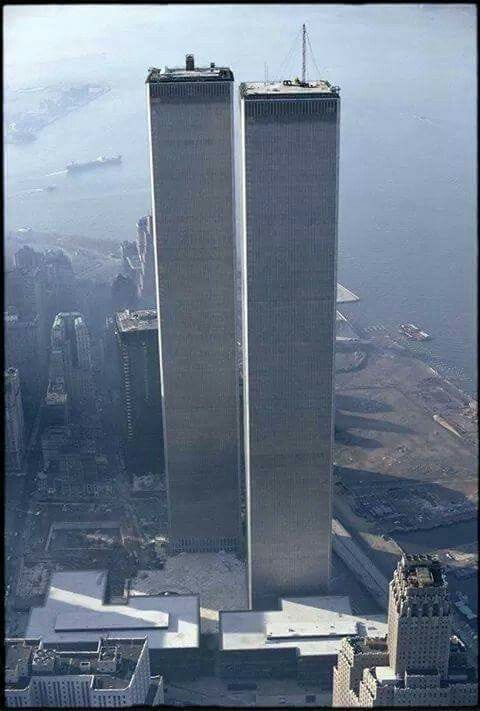
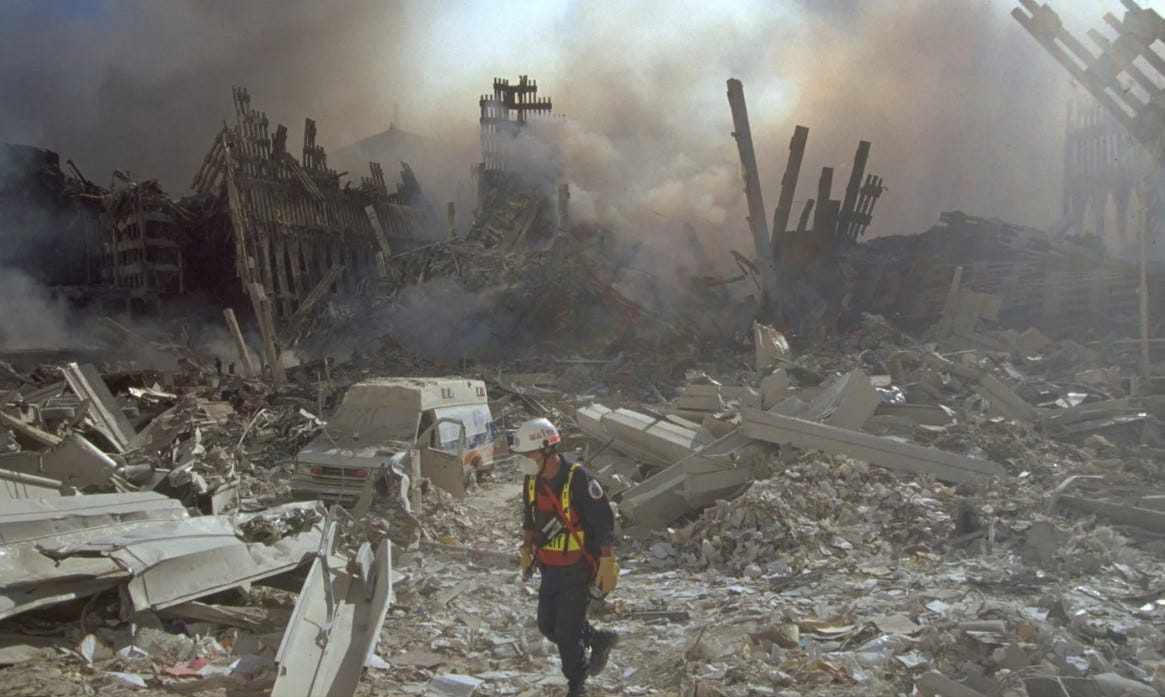
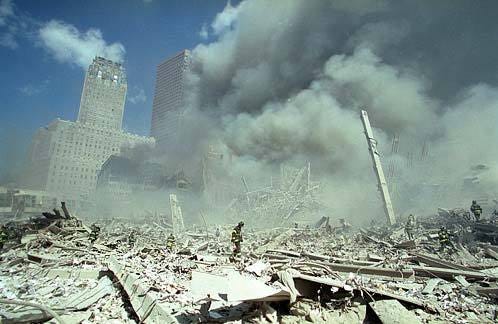


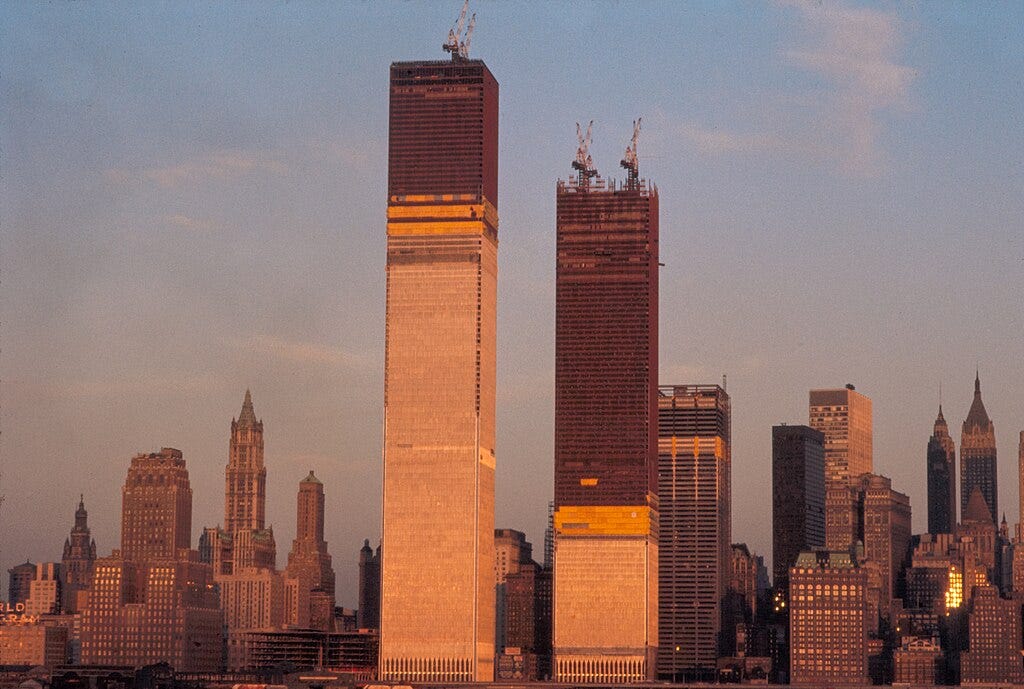

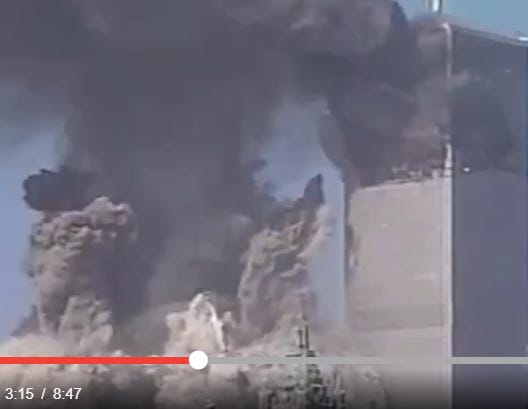




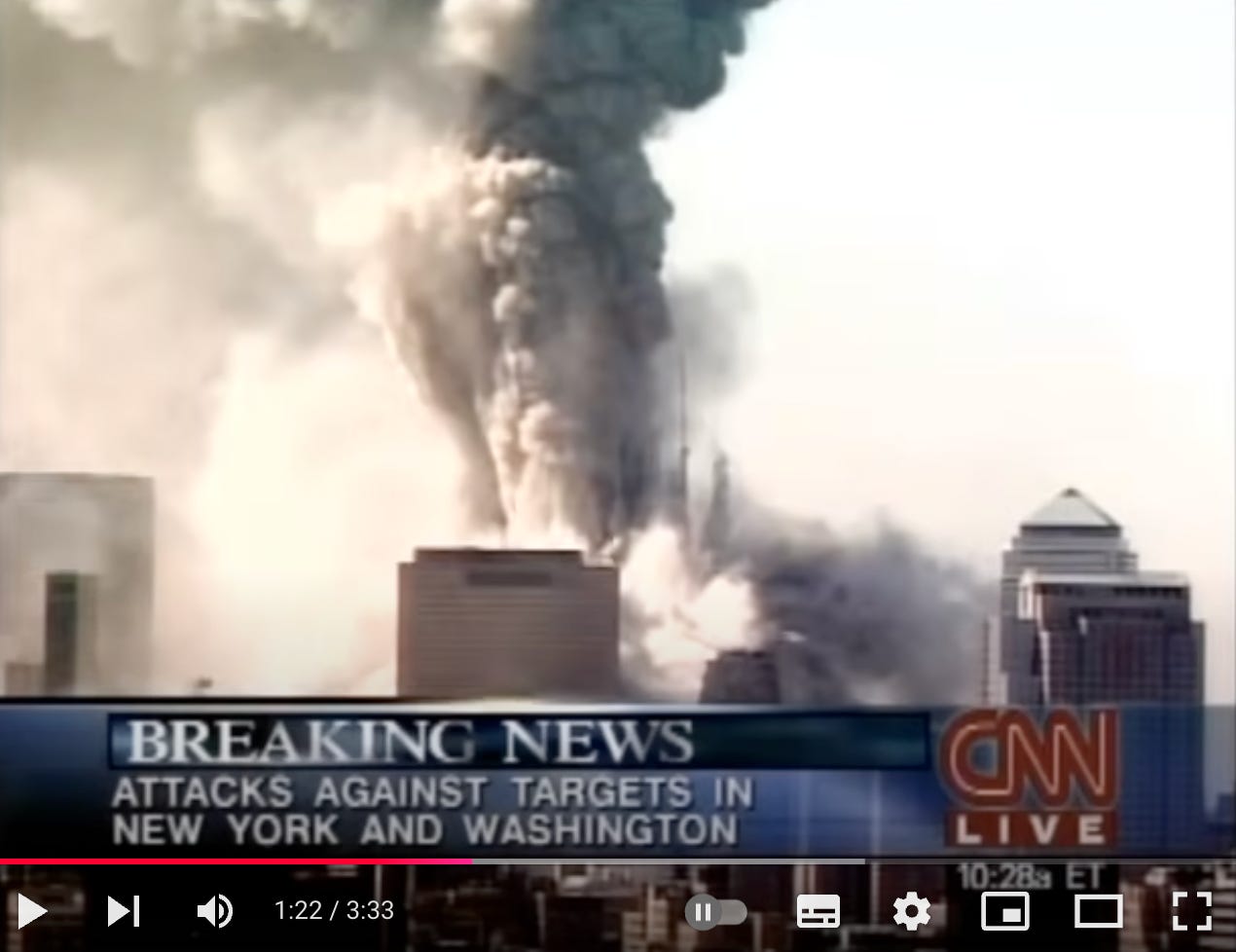



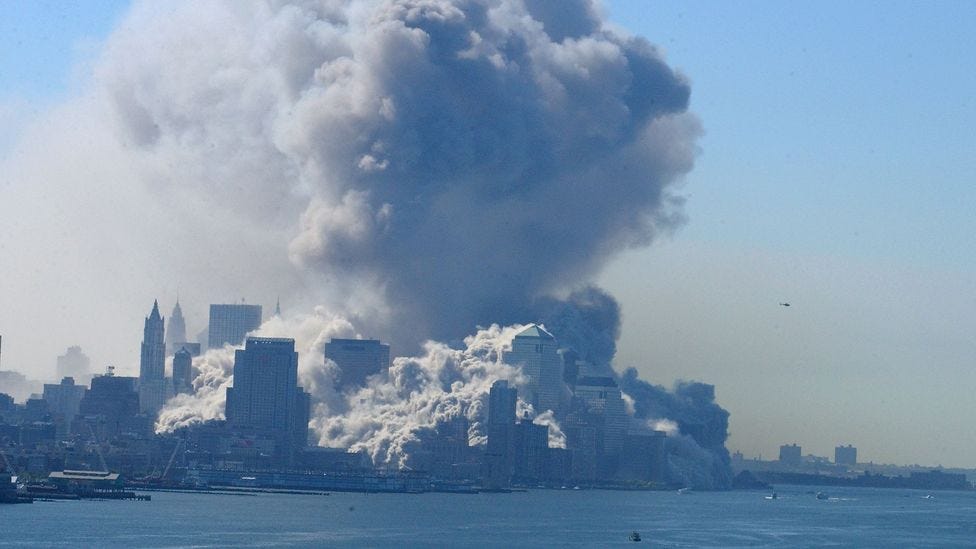


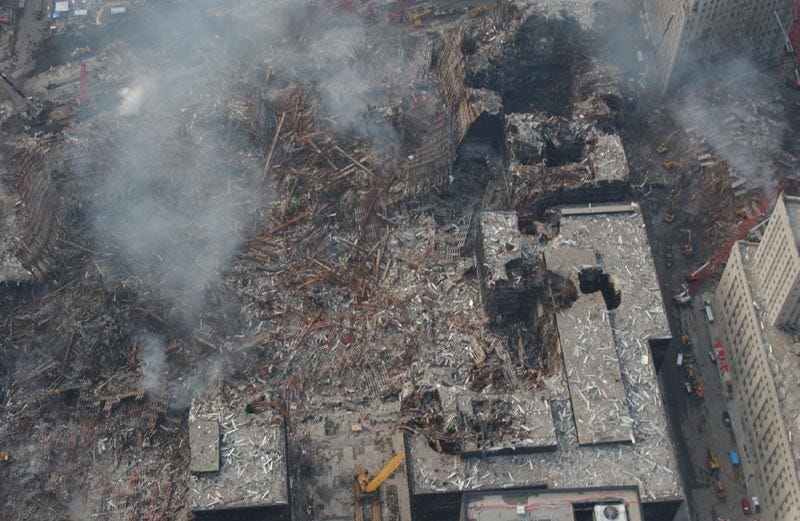
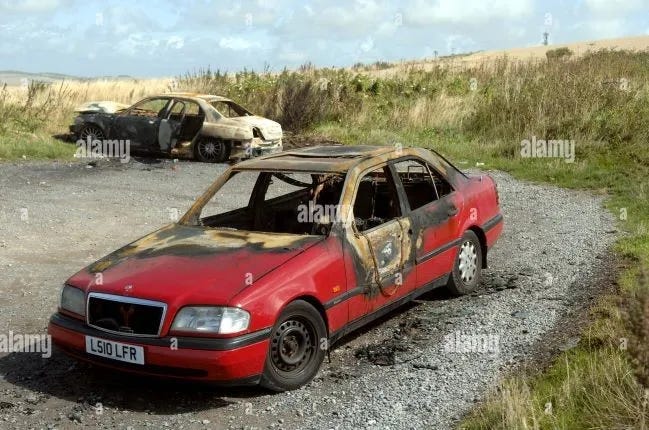








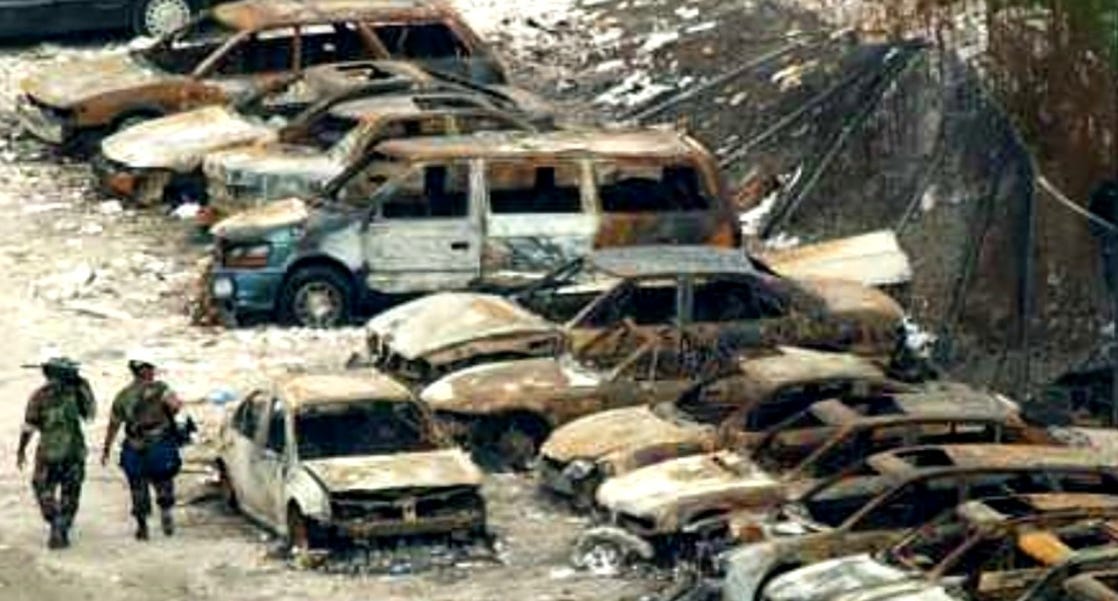
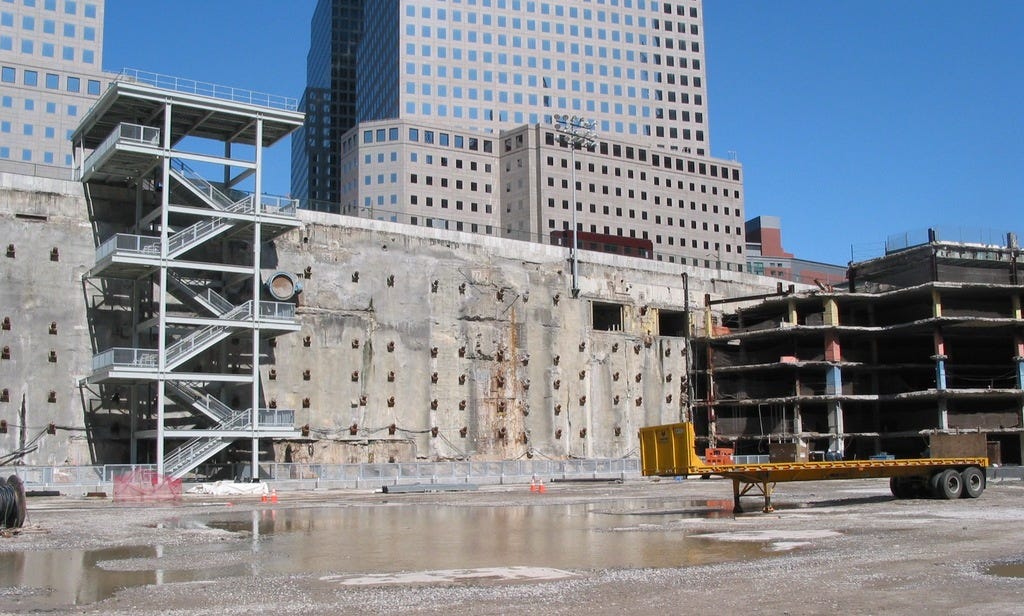
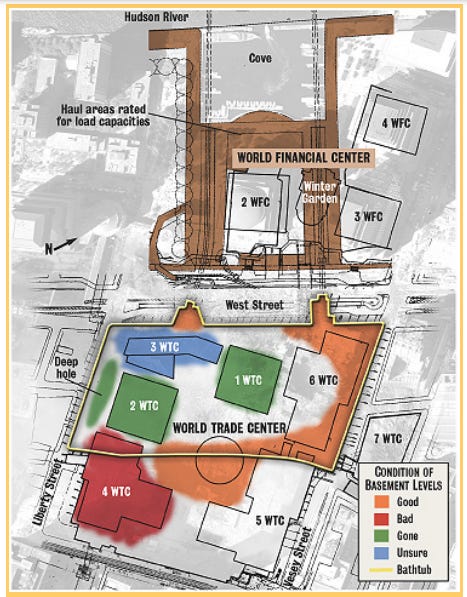
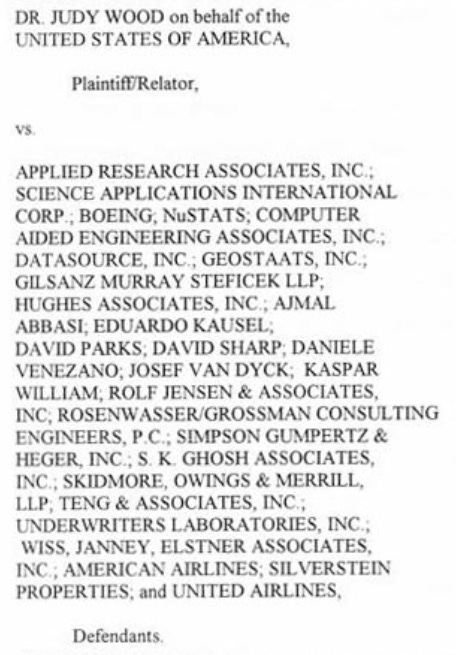

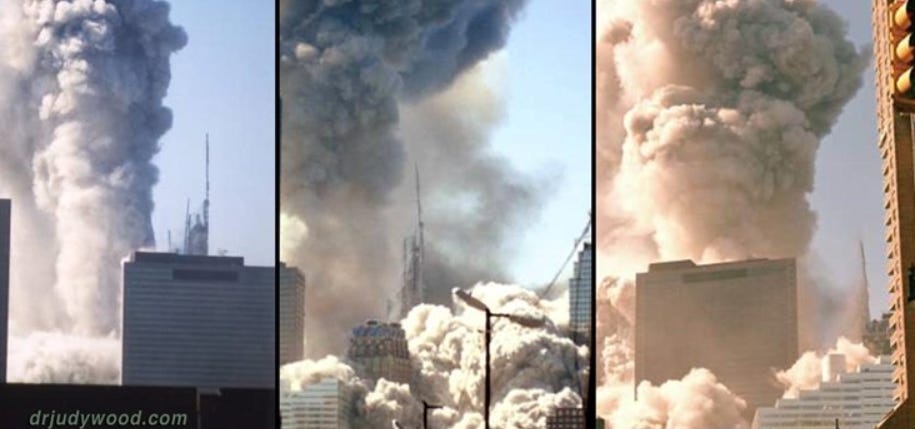


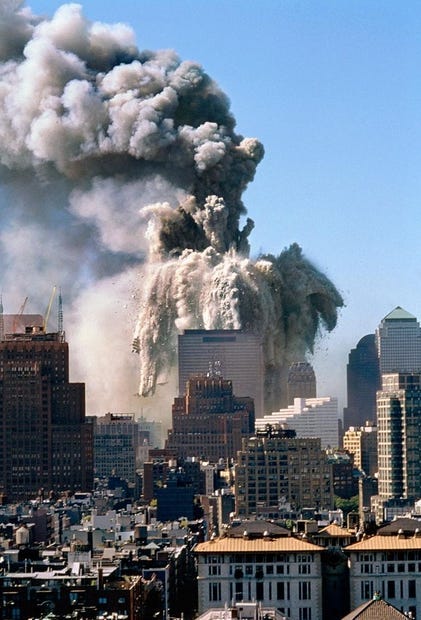
David, this was a delightful read. Though the nature of the topic is serious, I chuckled a couple of times at the dramatic irony of such hit pieces aimed at intellectually honest work. In my observation, the intended goal of such hit pieces not only fall short, they end up bolstering the work of the intended target. I thoroughly enjoyed your dissection and clear presentation. Thank you for your write up.
It just so happens that I loosely listened to Francis O'Neill's audio version of "Moon Walkers, Part 1" and quite liked it so gave it a 'like' afterwards - only to then listen to part of his audio on "9/11 Plain Speaking, Part 1" afterwards, which surprised me and raised red flags (and no 'like') but I shrugged it off at the time.
Then your article appeared in my mailbox today and on carefully reading it this evening it further explained why my gut feeling had been triggered (by O'Neill's audio a few weeks ago). Was I being lulled and lured into Camp 2? Has he already been lured into Camp 2? I remember thinking that the intense nature of this subject requires cautious careful reading, not casual audio - at least for me.
Impact crushing steel and exploding concrete, "giant shock absorber" and "molten iron droplets" made me laugh. Also, the "spire" turning to dust by "molten iron droplets" ... in seconds! And " ... it fell leaving a trail of dust momentarily suspended in the air." LOL!
Thanks for yet another excellent robust and rigorous article, as always, David. Like you, I was shocked by Francis O'Neill being the author of these 9/11 assertions because I believe he's a person of integrity, a genuine truther. I've watched several of his interviews and he always comes across as grounded and a decent bloke. His Covid truth activism is admirable. Yet his stance on Judy Wood is completely wrong-headed to me. Giant Red Flags are now raised.
This is a critical issue for ardent truthers, in my opinion. Judy Wood, Andrew Johnson and David Hughes stand out as courageous and staunch straight arrows for 9/11 truth - squarely in Camp 3 (the real truth). Their relentless robust and rigorous reasoning, sincerity and integrity resonates highly with me. Refined discernment in these times is everything as your article demonstrates with precision.
All I can think is that Francis O'Neill has been wrongly persuaded by the orchestrated fake 9/11 truthers. The test will be how he responds to your robust article, whether he can be persuaded to carefully rethink his position. I hope he does. If not, Camp 3 lost a good man to the fake pseudo-narratives of Camp 2.